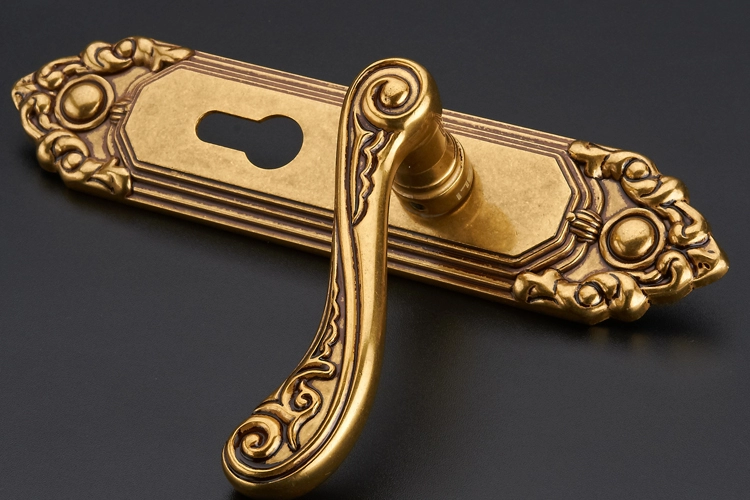When people choose locks, they are worried about that locks have poor durability or the surface of locks is rust or corroded even if the locks are used for a short time. That refers to the materials used for locks and the surface treatment.
Materials
In terms of durability, the best material is stainless steel, especially used for surface. The more frequently it used, the brighter surface is. Stainless steel has good strength, high corrosion resistance and no discoloration. However, stainless steel also has different categories, mainly classified into ferrite and austenite. Ferrite stainless steel has magnetism, also called as stainless iron. It also can rust if it is used for a long time or under poor environment. Only austenitic stainless steel cannot rust. Identification is also quite simple, using magnet.
Copper is one of the mostly used materials for lock, having excellent mechanical property, good corrosion resistance and processability. Besides, copper is gorgeous, especially used for forging handle or other decorating parts on locks, having smooth surface, good density, no pores or blow holes. It is firm and resists rust. Treated with 24K gold plating or gulch-gold on surface, the lock will be more gorgeous and honorable, adding color to people’s daily life.
Zinc alloy has poor strength and rust protection while it is easy for manufacturing into components having complicated patterns, especially for pressure die casting. Locks having complicated patterns which are commonly seen on market may be made of zinc alloy. Consumers should distinguish carefully.
Steel has good strength and low cost while it rust easily. Generally, it is used as materials for interior structure of lock. It is not suitable for being used as external decorations.
Materials
In terms of durability, the best material is stainless steel, especially used for surface. The more frequently it used, the brighter surface is. Stainless steel has good strength, high corrosion resistance and no discoloration. However, stainless steel also has different categories, mainly classified into ferrite and austenite. Ferrite stainless steel has magnetism, also called as stainless iron. It also can rust if it is used for a long time or under poor environment. Only austenitic stainless steel cannot rust. Identification is also quite simple, using magnet.
Copper is one of the mostly used materials for lock, having excellent mechanical property, good corrosion resistance and processability. Besides, copper is gorgeous, especially used for forging handle or other decorating parts on locks, having smooth surface, good density, no pores or blow holes. It is firm and resists rust. Treated with 24K gold plating or gulch-gold on surface, the lock will be more gorgeous and honorable, adding color to people’s daily life.
Zinc alloy has poor strength and rust protection while it is easy for manufacturing into components having complicated patterns, especially for pressure die casting. Locks having complicated patterns which are commonly seen on market may be made of zinc alloy. Consumers should distinguish carefully.
Steel has good strength and low cost while it rust easily. Generally, it is used as materials for interior structure of lock. It is not suitable for being used as external decorations.
Aluminum or aluminum alloy: common aluminum alloy (except for used for aerospace) is soft and light. The material has poor strength while it is easy for forming.
Surface treatment
Surface treatment generally refers to metal electrodeposition (electroplating), coating (spraying), chemical oxidation (dyeing) and other processing methods which can form a layer of protection film on the surface of parts. The film mainly play as a role in corrosion resistance, meanwhile, it also improves beauty and durability of products. It is an important factor directly measuring the quality of products.
Methods commonly used for measuring the quality of surface treatment
Covering is measure by using thickness, combining with strength inspection, salt mist and moisture test, appearance inspection. Coating is measured through adhesion of film, hardness, moisture test and appearance inspection.


 Español
Español 中文
中文